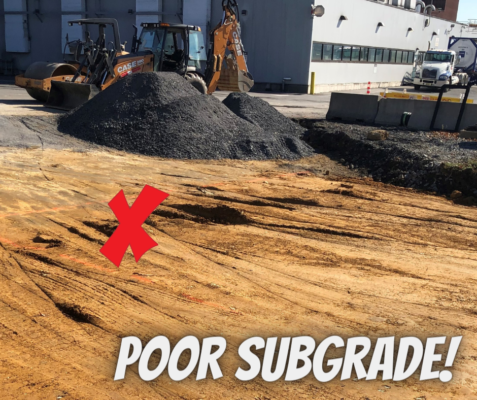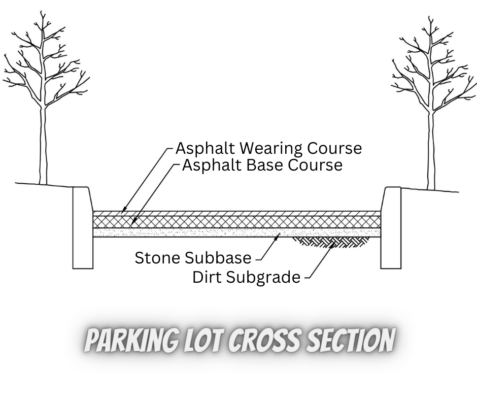When it comes to installing a new blacktop surface, one of the most important considerations is determining the appropriate thickness. The thickness of the blacktop can affect its durability, lifespan, and overall performance, so it’s essential to get it right. In this post, we’ll take a closer look at what the recommended thickness is for a new blacktop surface and why it matters.
Factors That Affect Blacktop Thickness
Before we dive into the recommended thickness for a new blacktop surface, it’s important to understand the factors that can affect the thickness of the blacktop in the design stage. These factors include:
-
The intended use of the surface: The thickness of the blacktop will depend on the type and frequency of traffic that the surface will experience. For example, a residential driveway may require a different thickness than a commercial parking lot due to the amount of traffic and the weight of the vehicles using it.
-
The existing subgrade: The quality and stability of the subgrade will also affect the thickness of the blacktop. A weaker poorly drained subgrade may require a thicker layer of blacktop for greater support.

-
The existing or proposed stone subbase: The stone subbase adds additional structural support and drainage characteristics to the pavement structure, typically allowing for a thinner blacktop thickness as the thickness of the stone subbase increases.
Recommended Thickness for a New Blacktop Surface
The recommended thickness for a new blacktop surface will depend on all of the factors mentioned above. However, as a general rule of thumb, the thickness of the blacktop should be at least 2 inches for residential driveways that will only see light passenger vehicle traffic and at least 4 inches for commercial parking lots that will only see the occasional truck delivery vehicle. For heavy-duty applications such as truck terminals or industrial facilities, the thickness may need to be 7+ inches to guarantee a long lasting surface.
In addition to the thickness of the blacktop, it’s also important to consider the subbase layer. The stone subbase layer provides a stable foundation for the blacktop and will help to prevent pavement failure. For most applications, the subbase layer should be at least 4 inches thick and can increase to 8 inches for heavy duty applications.

Why Thickness Matters
The thickness of the blacktop is an important factor in its overall performance and lifespan. A thicker layer of blacktop can help to distribute the weight of vehicles more evenly, reducing the likelihood of cracking and other types of damage. It can also provide better protection against weather-related damage, such as freeze-thaw cycles or heavy rainfall.
On the other hand, if the blacktop is too thin, it may not be able to withstand the weight of vehicles or the elements, leading to cracking, potholes, and other types of damage. Additionally, a thinner layer of blacktop may not last as long, meaning you’ll need to invest in repairs or replacements sooner than you would with a thicker layer.
In conclusion, the recommended thickness for a new blacktop surface will depend on a variety of factors, including the intended use of the surface, the quality of the subgrade, and the climate and weather conditions in your area. As a general rule of thumb, the thickness of the blacktop should be at least 2 inches for residential driveways and 4 inches for commercial parking lots, with a stone subbase layer that is at least 4 inches thick. By following these guidelines, you can help to ensure that your blacktop surface is durable, long-lasting, and able to withstand the elements.

